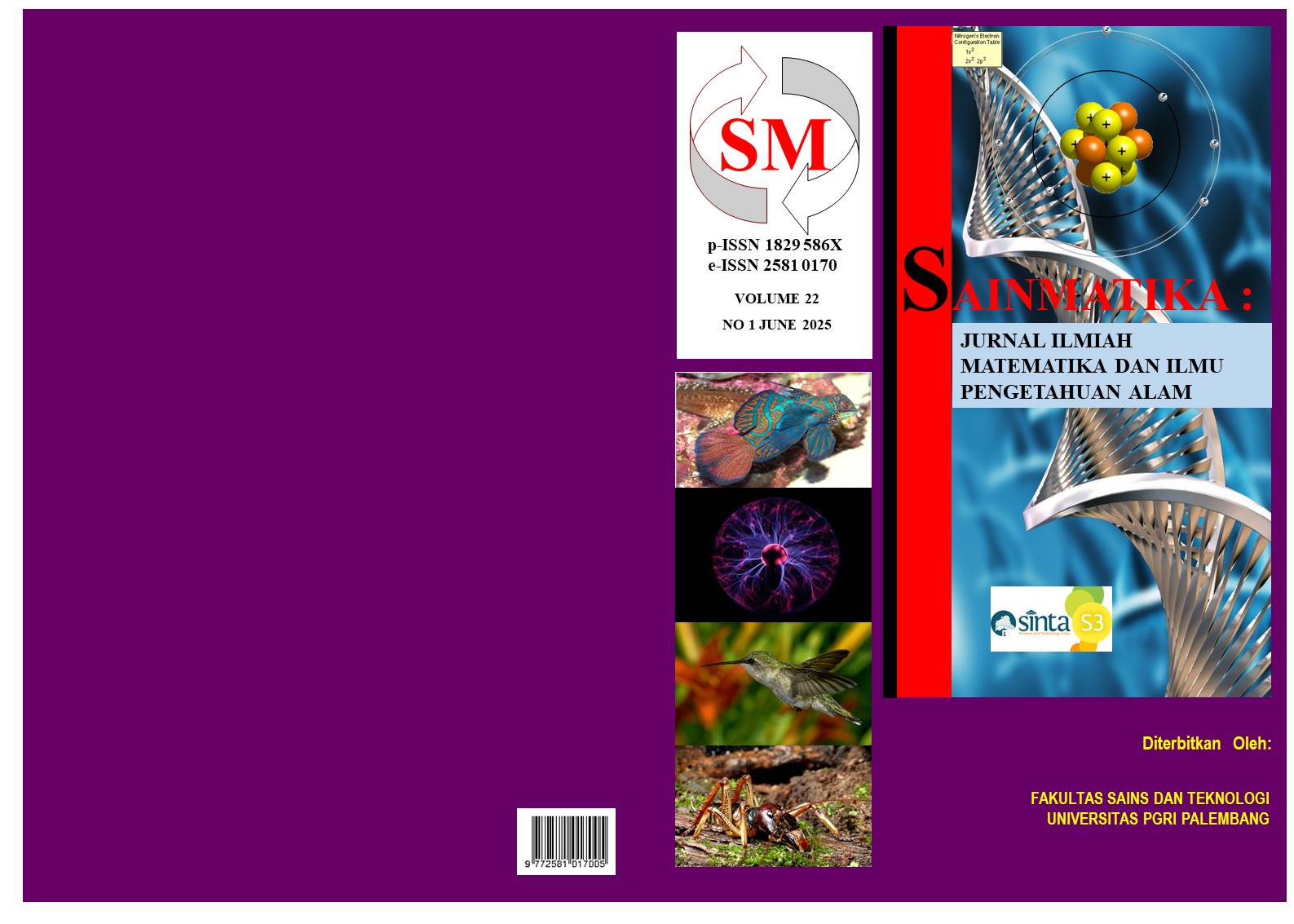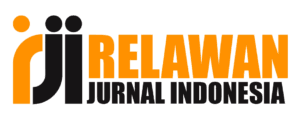Risk Factors Related to Anemia in Oil Palm Plantation Workers in Ogan Komering Ilir Regency
DOI:
https://doi.org/10.31851/sainmatika.v22i1.18176Keywords:
Anemia, plantation workers, risk factors, oil palm, occupational healthAbstract
Anemia is a common health problem worldwide, especially in developing countries. Oil palm plantation workers are at high risk of developing anemia due to various factors such as diet, working conditions, and pesticide exposure. This study analyzes the risk factors associated with anemia in oil palm plantation workers in Ogan Komering Ilir Regency. The research method used was an analytical survey with a cross-sectional approach. Data were collected through structured interviews and questionnaires with 33 oil palm plantation workers. The variables studied included age, occupation, level of knowledge, family support, and specific exposure. Statistical analysis was performed using the chi-square test. The results showed that the incidence of anemia in plantation workers reached 14.7%. Occupational factors (p = 0.011) and family support (p = 0.005) had a significant relationship with the incidence of anemia. However, no significant relationship was found between age (p = 0.414), level of knowledge (p = 1.000), and exposure (p = 0.634) with the incidence of anemia. This study concludes that occupational factors and family support contribute to the incidence of anemia in oil palm plantation workers. Further research is needed to explore other risk factors that may influence the incidence of anemia in this group.
References
Adamson JW, Longo DL. Anemia & olycythemia. In Kasper DL, Hauser SL, Lameson JL, Fauci AS, Longo DL, Loscalo J, Editors. Horrrison’s Principles of Internal Medicine. Vol 1. Mc Graw Hill E
Aedh, A., Elfaki, N. K., & Sounni, E. M. (2019). Iron Deficiency Anemia and Associated Risk Factors among Teenagers. International Journal of Medical Research & Health Sciences, 8(5), 108–114.
Aggarwal, A., Aggarwal, A., Goyal, S., & Aggarwal, S. (2020). Iron-deficiency anemia among adolescents: A global public health concern. International Journal of Advanced Community Medicine, 3(2), 35–40. https://doi.org/10.33545/comed.2020.v3.i 2a.148
Research and Development Agency , Ministry of Health, Republic of Indonesia. National Basic Health Research Report 2013. Jakarta: Health Research and Development Agency , Ministry of Health, Republic of Indonesia; 2014.
Beck, K. L. (2015). Anemia: Prevention and Dietary Strategies. In Encyclopedia of Food and Health (1st ed.). Elsevier Ltd. https://doi.org/10.1016/B978-0-12- 384947-2.00030-1
Basta, S. S., Soekirman, Karyadi, D., & Scrimshaw, N. S. (1979). Iron deficiency of adult males anemia and the productivity in Indonesia1 ’. The American Journal of Clinical Nutrition, March, 916–925.
Callander, E. J., & Schofield, D. J. (2016). Is there a mismatch between who gets iron supplementation and who needs it? A cross-sectional study of iron supplements, iron deficiency anaemia and socioeconomic status in Australia. British Journal of Nutrition, 115(4), 703–708. https://doi.org/10.1017/S0007114515004 912
Capel, E. H. (1944). Nutrition and the Industrial Worker. Occupational and Environmental Medicine, 1(1), 48–53. https://doi.org/10.1136/oem.1.1.48
Domenica Cappellini , M., & Motta, I. (2015). Anemia in Clinical Practice-Definition and Classification: Does Hemoglobin Change With Aging? Seminars in Hematology, 52(4), 261–269. https://doi.org/10.1053/j.seminhematol.20 07.15.006
Dewi , AP, Zatil , S., & Al, A. (2020). Related Factors With Anemia In Female Workers In Factory North Lampung Plywood 2017. Jikmi , 1, 1–10 .
Fitri , L. (2016). Relationship between Diet Patterns with Anemia in Female Workers at PT. Indah Kiat Pulp and Paper (IKPP) Tbk . Perawang . Endurance Journal , 1(3), 152. https://doi.org/10.22216/jen.v1i3.1579
Juliana, M., Camelia, A., & Rahmiwati , A. (2018). Analysis factor risk fatigue work on employees part PT. Arwana production grace ceramics , tbk . Journal Public Health Sciences , 9(1), 53–63.
Kementerian Kesehatan Republik Indonesia.(2014).https://repository.badankebijakan.kemkes.go.id/id/eprint/4467/1/Laporan_riskesdas_2013_final.pdfKhatun , T. , Alamin , A. , Saleh , F. , Hossain , M. , Hoque , A. , & Ali , L. (2013). Anemia among Garment Factory Workers in Bangladesh. Middle East Journal of Scientific Research, 16(4), 502–507. https://doi.org/10.5829/idosi.improvement.2013. 16.04.7527
Maksuk , M., Pratiwi , D., Amin, M., & Suzzana , S. (2019). Hemoglobin Levels of Workers Sprayer Weeds Consequence Exposure Pesticide On the Coconut Plantation Palm Oil . JPP ( Palembang Health Polytechnic Journal ), 14(1), 45–52. https://doi.org/10.36086/jpp.v14i1.397
Makurat , J. , Friedrich , H. , Kuong , K. , Wieringa , FT , Chamnan , C. , & Krawinkel , MB (2016). Nutritional and micronutrient status of female workers in a garment factory in Cambodia. Nutrients , 8(11), 1– 16
Mantika , AI, & Mulyati , T. (2014). Relationship intake energy , protein, substances iron and activity physique with energy hemoglobin levels Work women in the factory processing PT Won Jin Indonesia signs . Journal of Nutrition College, 3(4), 988–993. http://ejournals1.undip.ac.id/index.php/jnc
Oppenheimer, S. J. (2001). Iron-deficiency anemia: reexamining the nature and magnitude of the public health problem. The Journal of Nutrition, 131, 616–635.
Pepłońska, B., Nowak, P., & Trafalska, E. (2019). The association between night shift work and nutrition patterns among nurses: A literature review. Medycyna Pracy, 70(3), 363–376. https://doi.org/10.13075/mp.5893.00816
Spurr, G. B. (1983). Nutritional status and physical work capacity. American Journal of Physical Anthropology, 26(1 S), 1–35. https://doi.org/10.1002/ajpa.1330260503
Stoltzfus, R. J. (2003). Iron deficiency: Global prevalence and consequences. Food and Nutrition Bulletin, 24(4 SUPPLEMENT). https://doi.org/10.1177/15648265030244s 106
Suparman , PR (2018). Factors That Influence Anemia Incidence in Workers at PT. X in 2018. Undergraduate Theses of Public Health, 0(0), Esa University Superior . https://digilib.esaunggul.ac.id/UEUUndergraduate-201531192_/10701
World Health Organization. (2011). Hemoglobin concentrations for the diagnosis of anemia and assessment of severity. https://apps.who.int/iris/handle/10665/85 839
Downloads
Published
Issue
Section
License

This work is licensed under a Creative Commons Attribution-NonCommercial-ShareAlike 4.0 International License.









